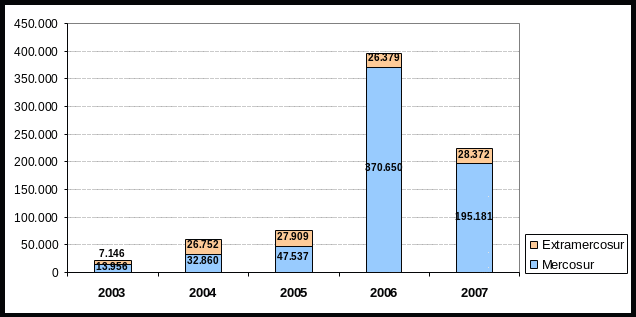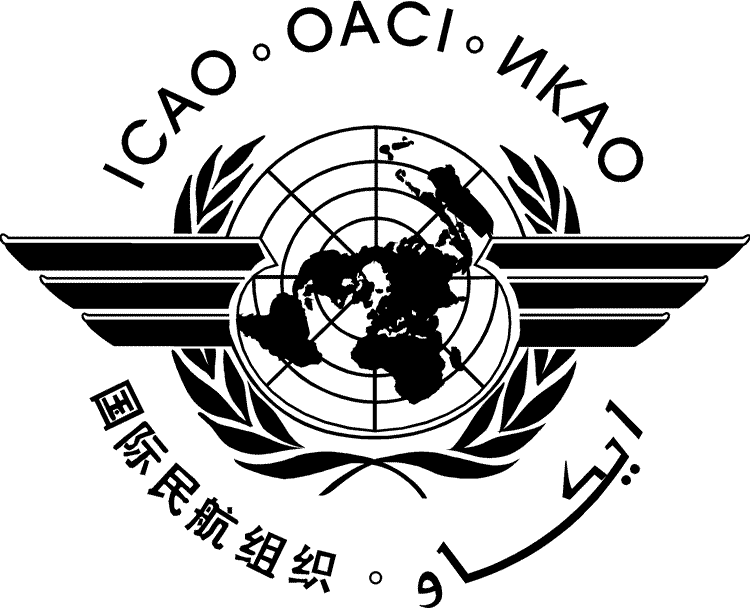3 IAVWOPSG4WP31 INTERNATIONAL CIVIL AVIATION ORGANIZATION WORKING PAPER IAVWOPSG4WP31
3 IAVWOPSG4WP31 INTERNATIONAL CIVIL AVIATION ORGANIZATION WORKING PAPER IAVWOPSG4WP31
VAAC Montréal Management Report
|
International Civil Aviation Organization
WORKING PAPER |
|
INTERNATIONAL AIRWAYS VOLCANO WATCH OPERATIONS GROUP (IAVWOPSG)
Paris, France, 15 to 19 September 2008
|
5: |
Operation of the IAVWOPSG |
|
|
|
5.1: |
Implementation of the IAVW, including the IAVW Management Report |
VAAC Montréal Management Report
|
This paper presents the VAAC Montréal Management Report. |
Although no volcanic eruptions took place in the area of responsibility of volcanic ash advisory centre (VAAC) Montréal during the period January 2007 – May 2008, staff was kept busy participating in a series of coordination and dissemination tests, workshops as well as updates to software used in operational responses to volcanic events and formats of Volcanic Ash Advisories (VAAs).
INTRODUCTION
The VAAC Montréal area of responsibility includes the following Flight Information Regions (FIRs): all Canadian FIRs, Sondrestrom (Greenland, below FL195), Gander Oceanic (including the southern tip of Greenland above FL195) and Reykjavik (Greenland, above FL195). It operates from the 24/7 operations at the Canadian Meteorological Centre.
Operations of the VAAC
Issuance of volcanic ash advisory:
No VAAs were issued.
significant eruptions in the VAAC area:
VAAC Montréal has had no eruption or ash cloud in its area of responsibility; and.
starting on Tuesday October 9, 2007, a swarm of small earthquakes commenced about 100 km west of Quesnel, British Columbia. Analysis indicated that the earthquakes were occurring about 20 km west of Nazko Cone, at approximately 25 km beneath the earth’s surface and suggested that magma intruding deep within the earth’s crust in the general region of Nazko cone volcano is the likely cause of the seismic activity. Based on the number and size of the seismic events, there is no evidence at this time to suggest that a volcanic eruption is likely. The activity is being closely monitored by Natural Resources Canada . Staff at VAAC Montréal are working in close collaboration with staff at Natural Resources Canada who have developed so-called “hazard maps” for the region around this volcano, indicating where fallout from an eventual eruption would take place; and
significant operation or technical changes:
an updated version of the software used operationally at VAAC Montréal to create VAAs and to run the trajectory and CANERM models was implemented on 27 June 2007.
the above software update allowed changes to be made to the template used for VAAs in order to comply with the changes made in Amendment 74 to Annex 3 (November 2007).
work is underway at VAAC Montréal to implement the Volcanic Ash Graphic (VAG) operationally. A test version of the product exists internally, but considerable work still needs to be done to make this available to external users.
the lagrangian model MLDP continued to be developed and tested during the period;
starting on 27 February 2007, a weekly testing of the operational response of VAAC Montréal to volcanic events began. Each Tuesday, the supervisor on shift has the responsibility to test either CANERM, the trajectory model, issuance of VAAs or satellite data split-window and other channels extraction. These tests have permitted:
real-time identification and subsequent correction of problems relating to transmissions of products; and
individual staff members to become more familiar and comfortable with procedures which they would be required to follow during an actual event. This is important, given that actual events are rare.
an update of the public web site of the VAAC Montréal was completed in the fall of 2007; and
VAAC backup:
VAAC Washington is the backup for VAAC Montréal. The last test transmission of an FVCN01 CWAO message from Washington VAAC was conducted on 27 November 2006.
IAVW implementation issues:
Several tests of coordination and/or transmission were performed during the period with the following centres:
Icelandic meteorological watch office (MWO) , Reykjavik on 16 October 2007;
VAAC Anchorage on 30 October 2007;
Canadian Meteorological Aviation Centre (CMAC-West, Edmonton, Alberta) on 31 October 2007; and
VAAC London on 13 March 2008.
Staff from VAAC Montréal participated in a workshop given by the VAAC Anchorage on 15-16 May 2007. This workshop brought together users and emitters of VAAs in order to discuss issues related to these and to promote better coordination.
Staff from VAAC Montréal delivered a workshop at the Canadian Meteorological Aviation Centre – West (CMAC) in Edmonton, Alberta on 22-23 January 2008. CMAC is the MWO responsible for the issuance of volcanic ash SIGMETs for FIRs in Canada and Gander Oceanic. The objective of the workshop was to refresh knowledge and to review tools available and procedures in place for operational staff in the event of a volcanic eruption/ash cloud affecting CMAC’s area of responsibility.
Staff from VAAC Montréal participated in the review and translation of Canada’s Interagency Volcanic Event Notification Plan (IVENP). This plan is under the leadership of Natural Resources Canada and defines notification procedures / flowchart of contacts to be made between various agencies (including VAAC Montréal and CMAC-West), mostly within western Canada, in the event of a volcanic eruption or ash cloud in or near Canada.
Automated “watch” trajectories and CANERM maps for a number of volcanoes of interest to the VAAC Montréal operations, or in support to another VAAC, are produced twice daily with each new run of the GEM model and posted on the web pages.
The IAVWOPSG is invited to:
complete the implementation of the Volcanic Ash Graphic;
continue weekly testing by VAAC supervisor; and
continue testing of a new lagrangian volcanic ash transport and dispersion model (MLDP).
— END —
Tags: iavwopsg4wp31, working, aviation, international, civil, organization, paper
- MINISTÉRIO DA DEFESA EXÉRCITO BRASILEIRO CML Lª RM
- İTÜ ÖĞRENCI İŞLERI DAIRE BAŞKANLIĞI (ÖİDB) 12071997’DE KABUL EDILMIŞ
- PROPUESTA SISTEMA REGIONAL AREAS PROTEGIDAS REGION CDMB INTRODUCCIÓN
- Ðïࡱáþÿ ¥áx80 Ø¿qdbjbjææææ ½±x84x8cx84x8cïo2ÿÿÿÿÿÿ·¦¦éÿÿÿÿ1118iå1¯x91g¢x8addàcÿÿÿÿÿp)9 ®ë1¢x82èaee0¯eêaöx87lx87ldàcàcnx87lndì050wseteteô¯x87l¦ ¯ Meeting the
- SEASON TICKET LOANS CONTENTS POLICY STATEMENT 1PRINCIPLES
- NOMOR ………… (BERDASARKAN SISTEM PENOMORAN PEMOHON) TEMPAT TANGGAL
- BATZAR NAGUSIEI BERRI EMATEA GIPUZKOAKO LURRALDE HISTORIKOAREN FORU SEKTORE
- SERVIZO DE NORMALIZACIÓN LINGÜÍSTICA MODELO DE SOLICITUDE PRIMEIRO APELIDO
- BECAS Y AYUDAS UNA BECA O AYUDA ES TODA
- COMENTARIO DE GRÁFICAS TERMOPLUVIOMÉTRICAS 1 ANÁLISIS DE LAS TEMPERATURAS
- REQUEST FOR CONTINUED EXAMINATION GUIDELINES UPDATED MAY 12 2008
- SENNENTUNTSCHI ODER SENNPOPPA NACH EINEM STÜCK VON HANSJÖRG
- ESTADO DE MATO GROSSO DO SUL MUNICÍPIO DE ANASTÁCIO
- ESTUDIO DE LA RESPUESTA DEL MODELO E A LAS
- 4 DIÓSD VÁROS ÖNKORMÁNYZAT KÉPVISELŐTESTÜLETÉNEK … (…) ÖNKORMÁNYZATI RENDELETE
- PROFESNÍ ŽIVOTOPIS OSOBNÍ ÚDAJE PŘÍJMENÍ JMÉNO TITUL KAUCKÁ ANNA
- (SPONSORING ORGANIZATION) DATE MR RONALD L HILLIARD STATE
- JACK THE RIPPER’S LONDON GALLERY ACTIVITY PACK TEACHERS’ NOTES
- RESOLUCIÓN DE 17 DE OCTUBRE DE 2018 DE LA
- LA ODISEA DE HOMERO ADAPTADA POR INMACULADA CARNE ESCUER
- OPIS POSLOVA I PODACI O PLAĆI ZA RADNO MJESTO
- EDUCACIÓN DE ADULTOS © FINALIDAD LA EDUCACIÓN DE PERSONAS
- IMATGE PLATÒNICA DE LA CAVERNA PLATÓ LA REPÚBLICA VII
- TOIMIKUNNAT JA TYÖRYHMÄT 2009 – 2012 (VALINNAT TEHTY VUOSINA
- ỦY BAN NHÂN DÂN THÀNH PHỐ HÀ NỘI
- 31 EL CICLO ECONÓMICO EN MÉXICO Y EL SECTOR
- 112 IV INFORME ANUAL DERECHOS HUMANOS MINORIAS SEXUALES CHILENAS
- QUADERN 6 TENIR PERSONES DE REFERÈNCIA GUIA DIDÀCTICA I
- ADÜ ASHMYO 1SINIF BİYOKİMYA DERSİ ÇALIŞMA SORULARI 1) BIYOKIMYANIN
- PROGRAMACIÓN MÓDULO PROFESIONAL HIGIENE FACIAL Y CORPORAL CÓDIGO 0633
RESEARCH STUDY CPRS GUIDELINES 1 RESEARCH STUDY INITIATION NOTE
 E EXCMA DIPUTACIÓN DE VALLADOLID FAC VETERINARIA DE LEÓN
E EXCMA DIPUTACIÓN DE VALLADOLID FAC VETERINARIA DE LEÓNMINISTERO DELLA GIUSTIZIA DECRETO 24 SETTEMBRE 2014 N 202
DECLARACIÓN JURADA FACILITADOR ACREDITACIÓN DE REALIZACIÓN DE LAS CLASES
EXPLORING POWER PURCHASE AGREEMENTS – THE BASICS PART 1
 NOMBRES Y CORREOS ELECTRÓNICOS DE TODOS LOS RECTORES DE
NOMBRES Y CORREOS ELECTRÓNICOS DE TODOS LOS RECTORES DE INFORME DE LA SESIÓN ANUAL SOBRE LA IMPLEMENTACIÓN DEL
INFORME DE LA SESIÓN ANUAL SOBRE LA IMPLEMENTACIÓN DELPRZEMOC DOMOWA JEST PRZESTĘPSTWEM MALTRETOWANIE BICIE I PONIŻANIE ZAWSZE
ANONİM ŞİRKET YÖNETİM KURULUNDAN İSTİFA TESCİLİ KARAR ÖRNEĞİ KARAR
OBRAZLOŽENJE PRIJEDLOGA DRUGIH IZMJENA I DOPUNA PRORAČUNA OPĆINE LOVRAN
BEZPIECZNE MIASTO W NADZWYCZAJNYCH ZAGROŻENIACH ŚRODOWISKOWYCH OCHRONA LUDNOŚCI I
 SOLICITUD DEL TÍTULO D DÑA CON DNINIE
SOLICITUD DEL TÍTULO D DÑA CON DNINIE MAPAS CONCEPTUALES – CMAPTOOL BEATRIZ BLANCO OTANO COMENTARIOS DEL
MAPAS CONCEPTUALES – CMAPTOOL BEATRIZ BLANCO OTANO COMENTARIOS DELPOVERTYENVIRONMENT INTERACTIONS IN AGRICULTURE KEY FACTORS AND POLICY IMPLICATIONS
GUIDELINES FOR ELEMENT DIFFERENTIATED INSTRUCTION PROJECT NAME ELEMENT
 C ATABOLISMO DE LÍPIDOS Y FORMACIÓN DE CUERPOS CETÓNICOS
C ATABOLISMO DE LÍPIDOS Y FORMACIÓN DE CUERPOS CETÓNICOSDISCRIMINATION IN OLD AGE MULTIPLE CUMULATIVE AND ON THE
 N° DECRETO 339522 N° EXPEDIENTE 027572017TCE FECHA DEL DECRETO
N° DECRETO 339522 N° EXPEDIENTE 027572017TCE FECHA DEL DECRETORESOLUCION N° 7911 DEL 29 DE NOVIEMBRE DE 1999
DENİZLİ BELEDİYESİ ADAY MEMURLARI YETİŞTİRME YÖNETMELİĞİ BİRİNCİ BÖLÜM GENEL

